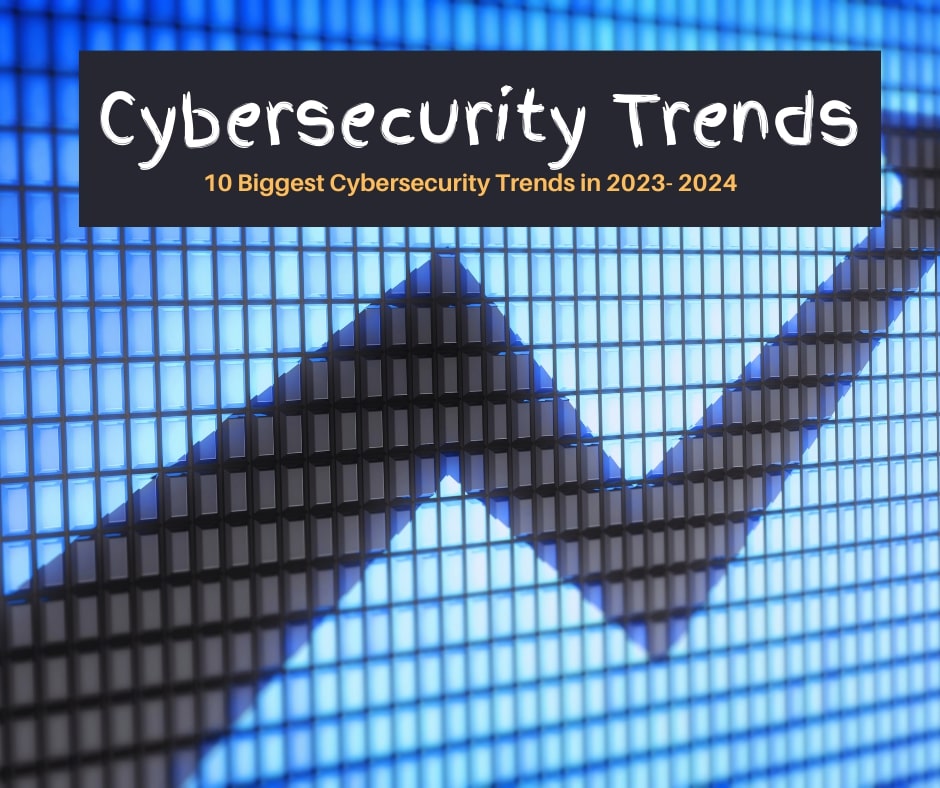Let’s explore the ten most significant trends that will dominate the cybersecurity landscape in the coming years.
- Zero Trust Architecture: The traditional perimeter-based security model is giving way to a more robust approach. Zero Trust Architecture assumes that no user or system, whether inside or outside the network, should be trusted by default. This trend emphasizes continuous verification, enhancing security by scrutinizing each access attempt.
- AI and Machine Learning Integration: As cyber threats become more sophisticated, the integration of artificial intelligence (AI) and machine learning (ML) is crucial. These technologies help identify patterns, anomalies, and potential threats in real-time, allowing for proactive threat detection and mitigation.
- Ransomware Resilience: With the surge in ransomware attacks, organizations are focusing on building resilience. This involves not only robust backup systems but also training employees to recognize and respond to potential threats. Additionally, the emphasis is on developing incident response plans to minimize the impact of successful attacks.
- Cloud Security Evolution: As businesses increasingly migrate to the cloud, cybersecurity must evolve accordingly. The focus is on enhancing cloud security measures, including robust encryption, identity management, and real-time monitoring to ensure the safety of sensitive data stored in cloud environments.
- IoT Security Measures: With the proliferation of Internet of Things (IoT) devices, there’s a growing need for improved security measures. Ensuring that these devices are secure, regularly updated, and monitored is crucial to prevent potential entry points for cybercriminals.
- Biometric Authentication Advancements: Traditional password-based authentication methods are becoming outdated. Biometric authentication, such as fingerprint and facial recognition, is gaining prominence for its effectiveness and user-friendly experience, reducing the risk of unauthorized access.
- Quantum-Safe Cryptography: The rise of quantum computing poses a potential threat to current encryption methods. Quantum-safe cryptography is emerging as a proactive measure to ensure that data remains secure even in the face of advancements in quantum computing.
- 5G Security: The widespread adoption of 5G technology brings new opportunities and challenges. With faster and more connected networks, the need for robust 5G security measures becomes imperative to prevent potential cyber threats exploiting the expanded attack surface.
- Supply Chain Security: Cybercriminals increasingly target the supply chain to gain unauthorized access to networks. Organizations are placing a heightened focus on securing every link in the supply chain to prevent cascading cyber incidents.
- Human-Centric Cybersecurity: Recognizing the human element in cybersecurity is vital. Cybersecurity awareness training for employees is becoming more personalized and targeted, helping create a culture of security within organizations.
In navigating the complex landscape of cybersecurity, organizations operating slick cyber systems must remain vigilant and adaptive. The trends mentioned above represent a roadmap for building resilience and staying ahead of cyber threats in the dynamic digital environment of 2023-2024. By embracing these trends, businesses can fortify their cybersecurity posture and ensure the integrity and confidentiality of their digital assets. As technology advances, so too must our approach to cybersecurity evolve, and staying informed about these trends is the first step towards a secure digital future.






